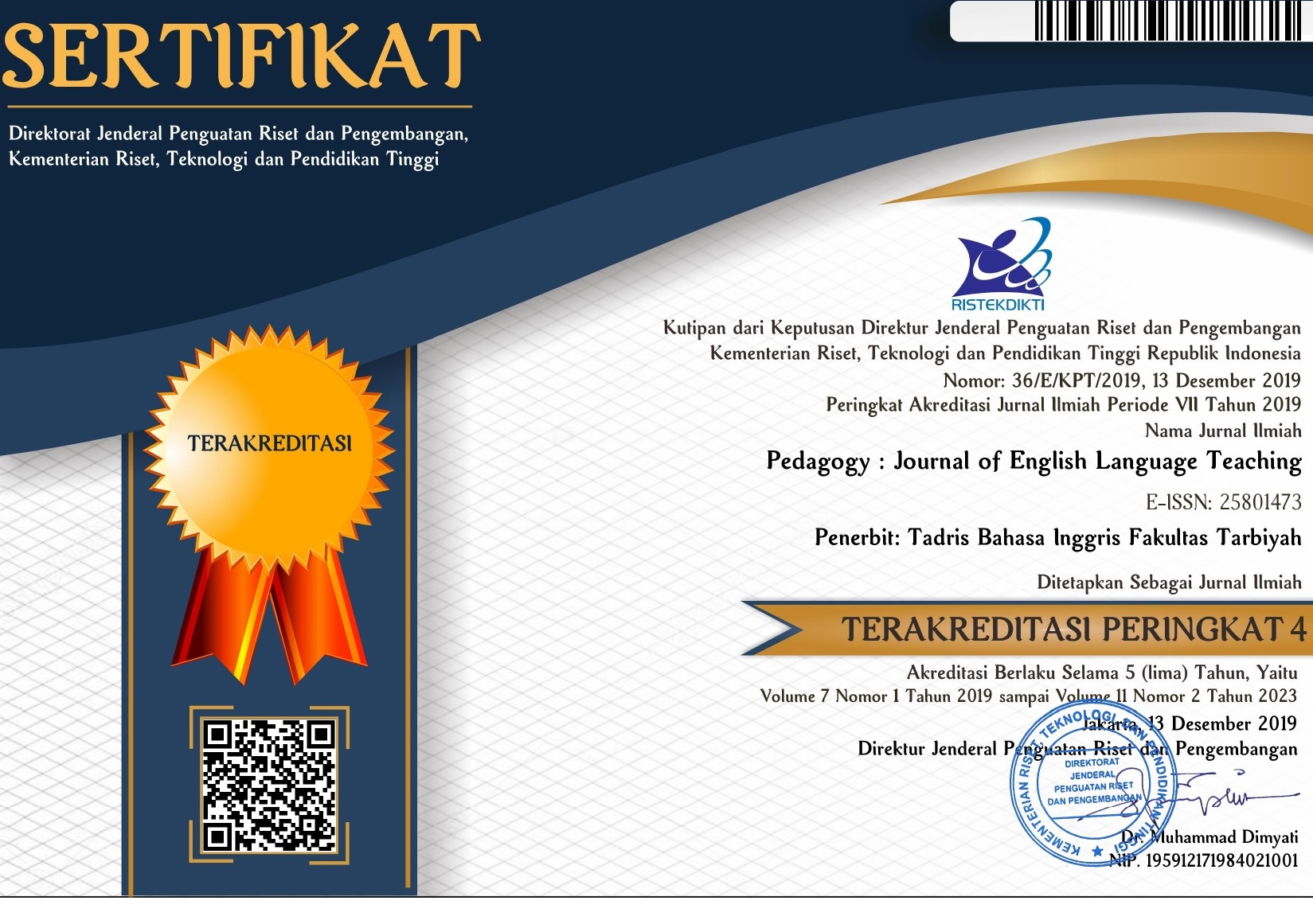Comprehending Personal Experience: Implementing Buzz Group in Teaching Reading
Keywords:
reading comprehension, personal recount text, buzz groupAbstract
The students’ reading comprehension of SMA Negeri 2 Tumijajar is still low especially in reading personal recount text. To solve the problem, the researcher applied Buzz Group. The objective of this research is to know whether there is a significant influence of using buzz group towards students’ reading comprehension on personal recount text at the eleventh grade of SMA Negeri 2 Tumijajar in the academic 2018/2019. The research methodology was quasi experimental design. In this research, the population was the eleventh grade of SMA Negeri 2 Tumijajar. The sample of this research was two classes consisting of 33 students for experimental class and 33 students for control class. In the experimental class, the researcher used buzz group and in the control class the teacher used think pair share. The treatments were held in 3 meetings in which 2 x 45 minutes for each class. In collecting data, the researcher used instrument in the form of multiple choice questions which had been tried out prior to the treatments. The instrument was given in pre-test and post-test. The researcher analyzed the data using SPSS to compute independent sample t-test. From the data analysis computed by SPSS, it was obtained that Sig. = 0.002 and α = 0.05. It means Ha is accepted because Sig. < α = 0.002 < 0.05. Therefore, there is a significant influence of using buzz group towards students’ reading comprehension on personal recount text at the eleventh grade of SMA Negeri 2 Tumijajar in the academic year 2018/2019.















